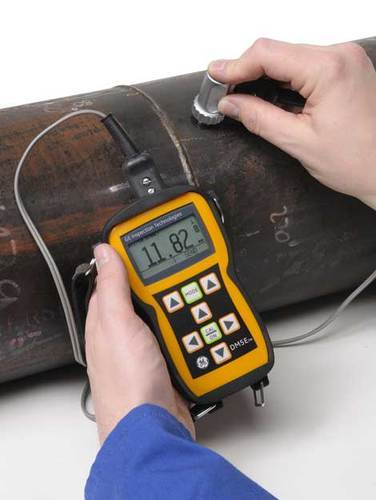Ultrasonic Thickness measurement
A method of detecting surface welding nonconformities in ferromagnetic welded connectors. This method is very accurate and efficient, it does, however, require careful preparation of the tested connector.

One of the most widespread NDT methods in mechanical equipment of industrial installations for the characterization of erosion and deterioration is the thickness measurements with the Ultrasonic method. We offer high level thickness measurement services on pipes, pressure vessels, boilers, tanks etc, by experienced and certified inspectors.It is also called as Ultrasonic wall thickness measurment, Thickness measurement.
Thickness measurement is achieved by placing the UT probe on the object surface. Local or general reductions of thickness can be located and measured with high precision. The instruments that are used for the measurement are portable and light with possibilities of saving the measurements data in a data logger.
The use of different probes offers the capability to perform thickness measurements in inaccessible surfaces, on very thin plates, on high temperature environments, above paint (thru-coat or echo to echo functions) as well as on surfaces with intense local corrosion without any surface smoothing required (use of pencil type probes).
Advantages of the method:
- Quick measurements with direct results.
- High precision measurements.
- The inspected object can be in-service

- No particular surface preparation required, minor wire brushing is needed.
- Measurements can be made without removal of the paint.
- Measurements can be made in inaccessible regions using suitable probes.
- Corrosion rate calculations can be made with thickness reduction observations with repeated measurements in the same points.
- Measurements on high temperature surfaces possible.
- Display of corrosion profile on B-Scan form.

